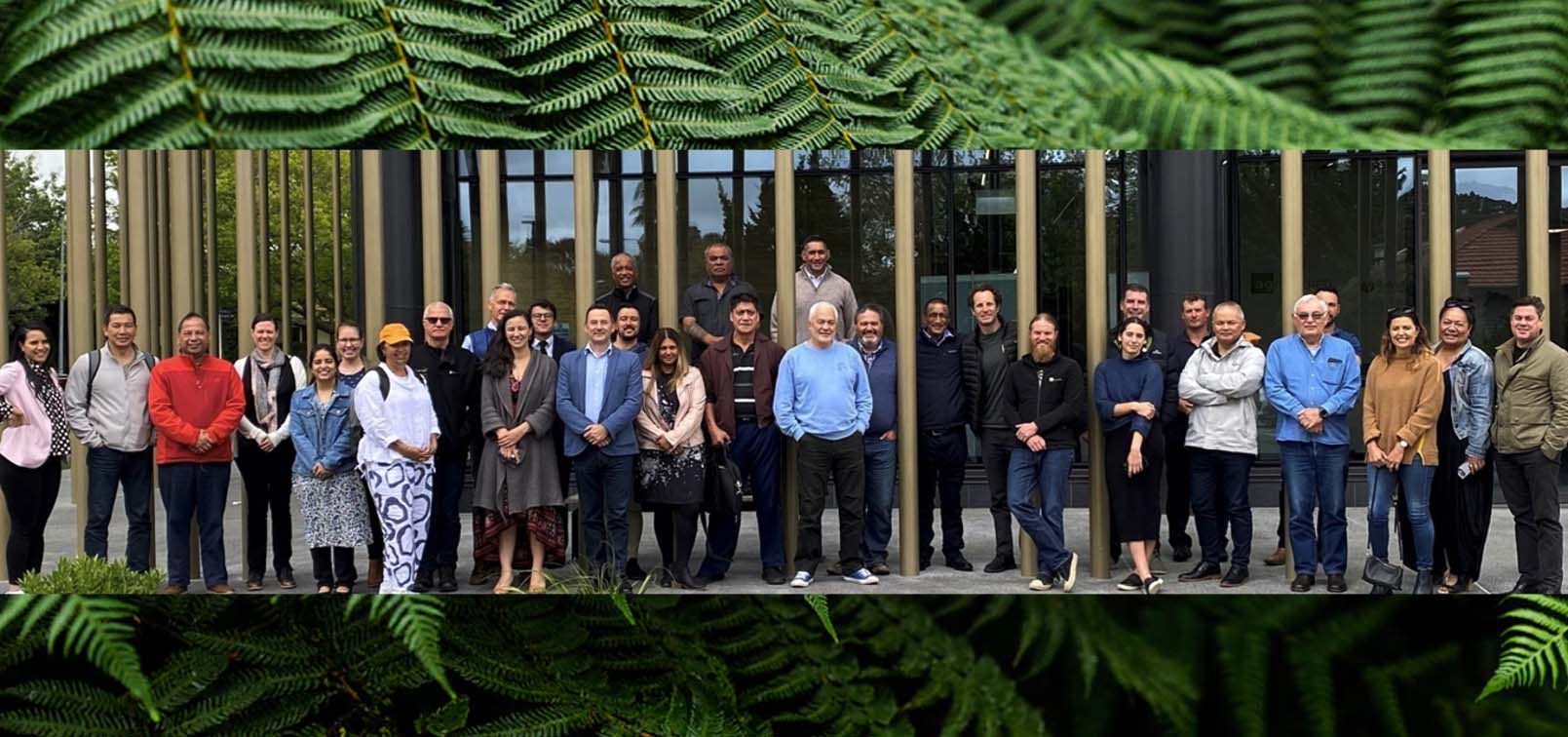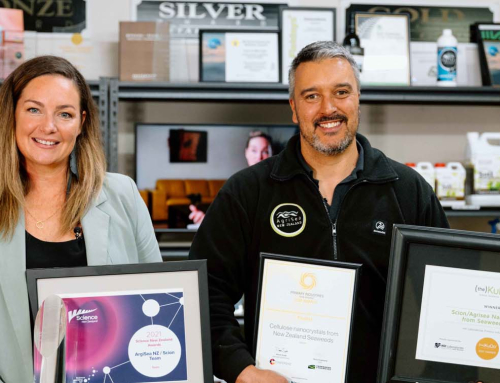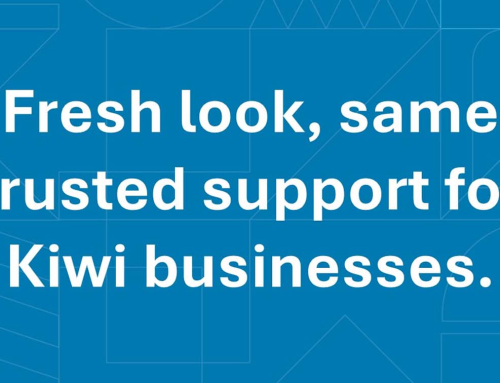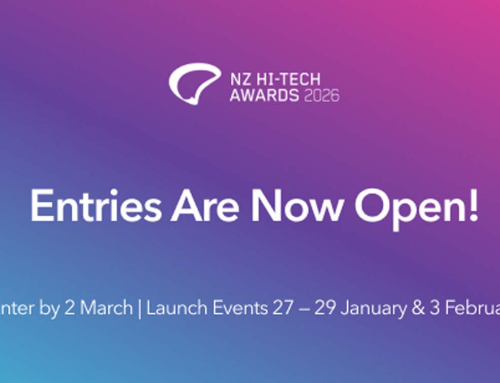Pictured: MiHI hui: Riddet Institute, Te Ohu Rangahau Kai, Massey University, 13-14 October 2020
‘Te Hononga – modelling Indigenous collaborative enterprise’ is a research report Te Au Rangahau—Massey Business School’s Māori Business Research Centre has just completed.
Te Au Rangahau co-director and one of the report’s co-authors Dr Jason Mika says, “the research could not have been done without the support of Poutama Trust, research funding from Ngā Pae o te Māramatanga—New Zealand’s Centre of Māori Research Excellence, and the manaakitanga of the Māori and non-Māori enterprises involved.”
“Te hononga means ‘the connection,’ it’s the place and feeling of joining together with one’s relatives and friends or where physical features like rivers and streams meet, where a consensus of the minds and bodies of the many is possible,” says Dr Mika.
This research explored why and how enterprises collaborate by studying two Māori enterprise collaborations at different stages of maturity—MiHI (Movers in Hemp Innovation) and Waiū Dairy. MiHI is a collaboration of Māori and non-Māori enterprises at the preliminary stages of exploring investment in hemp, while Waiū Dairy is a newly commissioned geothermally-powered dairy factory in Kawerau owned by 11 Māori entities and a Japanese owned enterprise. The aim of the research was to better understand enterprise collaboration as a Māori economic development strategy. It extends earlier research by Dr Robert Joseph and his colleagues into Māori enterprise collaboration and Distinguished Professor Graham Hingangaroa Smith and his colleagues into Māori economic development.
Enterprise collaboration is not new. It exists in many forms from simple partnerships to complex joint ventures, and is evident in business associations, networks, alliances, and clusters, but they all have one thing in common—a desire to cooperate to achieve shared goals not easily achieved by acting alone. This cooperative element is a fundamental principle of all organisations. What we don’t know is whether and how Māori enterprises collaborate in culturally distinctive ways that have meaning and value for them and others. What we do know is that Māori are drawn to collective forms of organisation that make sense for the needs of social groups, whether at the whānau or hapū level, or scaling up to iwi or waka level instances of ‘collaboration’ for mutual benefit.
The literature tells us that enterprises collaborate for many reasons. Some seek stability, lower risk, access to resources, efficiency gains, market acceptance, competitive advantage, corporate power, and access to knowledge and networks. Māori enterprises also seek these kinds of advantages, but they tend to be driven by something more fundamental. They see collaboration as a means to achieving collective well-being and to be self-determining as Māori. In other words, to be able to provide for whānau, hapū, iwi, and their communities and to do so in a way that respects their freedom to choose how they do this as tangata whenua—Indigenous people.
As one participant said, “young Māori want to be self-determining from an economic point of view. They want to provide an opportunity for their people. They want to do it for a very long time.” A Māori authority participant in the farming sector said that Māori enterprise collaboration is “based on whakapapa connection…, shared kaupapa and values.”
Dr Mika says “what we found is that a long-term orientation, collective well-being, self-determination, and shared kaupapa are just some of the ways in which Māori enterprise collaboration is culturally and commercially distinctive.”
“Collaboration for Māori is highly relational, it is based on shared whakapapa (genealogy), tikanga (values), knowledge, identity and history, and a shared aspiration to address the needs and well-being of our people. While the commercial imperative of economic success exists, it is the cultural imperative of collective well-being that drives collaborative enterprise among Māori to focus on providing for whānau in different and better ways” says Dr Mika.
Te Au Rangahau co-director and co-author Associate Professor Matt Roskruge says that “through the research we were able to develop a conceptual model we call Te Hononga to help explain the why and the how of Māori enterprise collaboration and the benefits of doing so. It’s not quite a theory, but it’s heading that way,” says Dr Roskruge. “The model says that if you put an enterprise collaboration together using the constitutive elements, instrumental processes, and desired consequences in the model, you should end up with something that resembles Māori enterprise collaboration.”
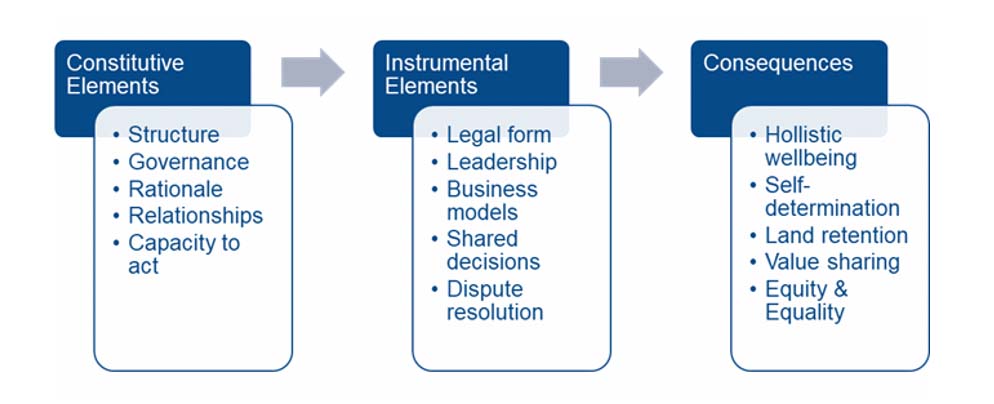
“Now there are lot’s of moving parts in the model, so if the ‘proof is in the pudding’ as they say, the ingredients and the recipe will depend very much on the cook. This is where intermediaries come into play—organisations like Poutama Trust, and allies like the Riddet Institute, New Zealand Trade and Enterprise and others are crucial to the formation and development of Māori enterprise collaboration,” says Dr Roskruge. “What participants said is that Māori enterprise collaboration just feels different, whether they are large or small entities, participants felt like their mana was recognised and valued; there was not the rivalry and self-interest around the table that can inhibit and destroy collaboration.”
Participants consider Poutama an exemplar of the intermediary function and former Poutama Chief Executive the embodiment of what they see as ‘excellence’ in the facilitation of Māori enterprise collaboration. The groundwork to convince early supporters sustained collaborations beyond the initial idea. As one participant shared “Poutama did a great job, another good example of facilitating that space because there’s such a hunger amongst Māori to be self-determined and do something more.”
Former Poutama CEO Richard Jones reports that “Waiū Dairy continues to grow, but not without its challenges. In fact, Waiū Dairy have faced many challenges, which is not uncommon for a dairy startup. However as a collective with an inter-generational focus, Waiū Dairy will weather the challenges and continue its evolvement as a collaborative enterprise”.
“MiHI are currently undertaking due diligence towards investing in one of their members—Kanapu, a hemp protein company,” says Richard. Kanapu is a vertically integrated business that provides collaboration members, especially growers, with certainty because of the access to processing technology. There are also plans to put a hemp milk product into the NZ and Australian markets, and MiHI is supporting feasibility work into establishing a geothermal heated medicinal cannabis growing facility.
Richard believes that “Māori enterprise collaboration is an under-utilised strategy. More needs to be done to bring together enterprises in new industries such as alternative foods and to continue to bridge the gap between Māori entrepreneurs who are idea rich and Māori entities who are asset rich.” Going forward Richard sees potential for more cross-sector collaboration as well.
Māori enterprise collaboration is a Māori economic development strategy that is culturally affirming because it is built on a foundation of shared values and tikanga supported by aspirations of collective well-being and self-determination. The experiences of MiHI and Waiū Dairy provide important insights into the why and how of Māori enterprise collaboration for others to consider and adapt in their own way.
By Michelle Anderson, Ngāti Awa, Te Aitanga a Māhaki, Ngāpuhi, is a Te Au Rangahau researcher. Email: m.********@*******ac.nz.

